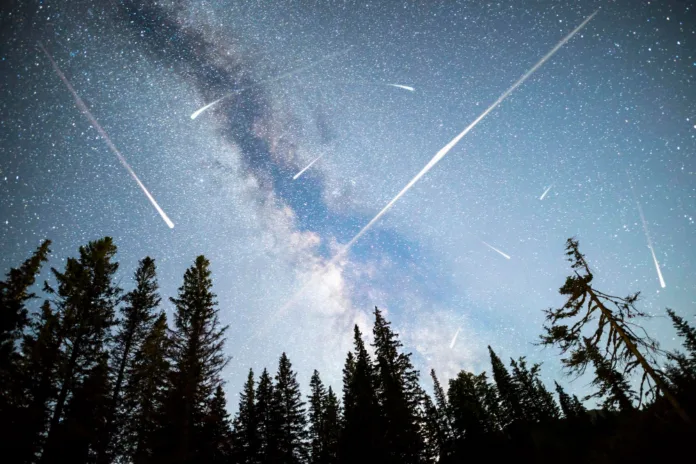The Draconids will peak on Wednesday evening, though moonlight and clouds may obscure the view
The Draconid meteor shower will reach its peak on Wednesday night, offering stargazers across the northern hemisphere a chance to witness one of autumn’s celestial highlights — though visibility this year may be limited by the full Harvest Moon and patches of cloudy weather.
The annual display, which continues until 10 October, will send streaks of light across the evening sky as the Earth passes through the dusty debris trail left by Comet 21P/Giacobini-Zinner. When these fragments — tiny particles of rock or ice — collide with the Earth’s atmosphere, they burn up from friction, creating bright flashes commonly known as shooting stars.
The Draconids are named after the constellation Draco, the mythical dragon, from which the meteors appear to radiate. Unlike most meteor showers, which are best viewed in the early hours before dawn, the Draconids tend to peak shortly after nightfall, making them ideal for families and early evening observers.
However, skywatchers hoping for a dazzling display this year may need to temper expectations. The 2025 Draconids coincide with the full Harvest Moon, which rose on 7 October, flooding the night sky with light that will wash out all but the brightest meteors.
Even so, conditions across much of England and Wales look promising. High pressure building from the south is expected to keep the weather dry and settled, with clear skies in many areas for much of the evening. Eastern Scotland should also see long breaks in the cloud, offering decent chances for meteor-spotting.
Further north and west, the outlook is less favourable. A weather front moving across the north-west of the UK will bring more cloud and occasional patchy rain to western Scotland, Northern Ireland, north-west England and the Isle of Man. These areas are likely to miss the best of the show.
Embed from Getty Images
Meteor activity is measured by the zenithal hourly rate (ZHR) — the number of meteors visible per hour under ideal conditions. For the Draconids, this rate varies dramatically from year to year. While recent showers have been relatively quiet, the event has a history of spectacular outbursts. During the 1933 and 1946 Draconid showers, skywatchers reported hundreds of meteors per minute, turning the heavens into a dazzling storm of light.
Such extraordinary displays are rare, and astronomers expect only modest activity this year. Still, the Draconids retain their charm, particularly because they are among the few meteor showers visible in the evening rather than the early morning.
For those planning to watch, experts advise finding a dark location away from city lights and allowing 15 minutes for eyes to adjust to the darkness. The constellation Draco sits high in the northern sky, so observers should face north and look upward. No telescopes or binoculars are needed — the Draconids are best enjoyed with the naked eye.
Patience, as ever, is essential. Meteors often arrive in unpredictable bursts, and even a handful of bright trails can make the experience memorable.
If cloud or moonlight spoils the view, skywatchers will not have long to wait for another chance. The Orionid meteor shower, one of the year’s more dependable events, will peak on 22 October, bringing fragments from Halley’s Comet streaking through the atmosphere.
Whether the Draconids dazzle or disappoint this week, the annual spectacle remains a reminder of our planet’s constant motion through space — and of the fleeting beauty hidden in the night sky, waiting for a break in the clouds.
